Search the Blog
Categories
- Books & Reading
- Broadband Buzz
- Census
- Education & Training
- General
- Grants
- Information Resources
- Library Management
- Nebraska Center for the Book
- Nebraska Libraries on the Web
- Nebraska Memories
- Now hiring @ your library
- Preservation
- Pretty Sweet Tech
- Programming
- Public Library Boards of Trustees
- Public Relations
- Talking Book & Braille Service (TBBS)
- Technology
- Uncategorized
- What's Up Doc / Govdocs
- Youth Services
Archives
Subscribe
Category Archives: Census
The Census and Special Districts in the U.S.
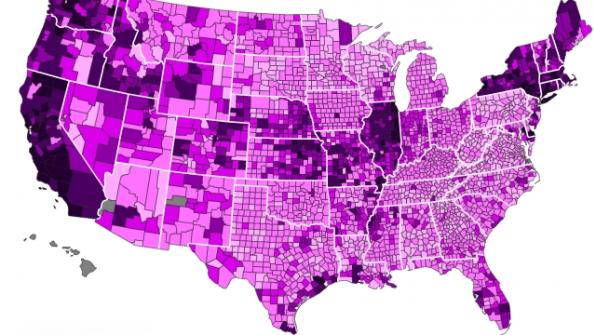
From Municipalities to Special Districts, Official Count of Every Type of Local Government is in the 2017 Census of Governments.
We know what counties and municipalities are. But what are special districts?
Special districts are independent government units created for a limited, specific purpose and, every year, new districts are created and existing ones dissolve.
The latest in-depth, encyclopedic count of special districts and all types of local governments in the United States is now available.
Released earlier this year, the U.S. Census Bureau’s 2017 Census of Governments Organization component provides statistics on governments in the United States as of June 2017 and shows changes since the last count in 2012.
Tables show counts by government type, state, population-size groups, function and school systems.
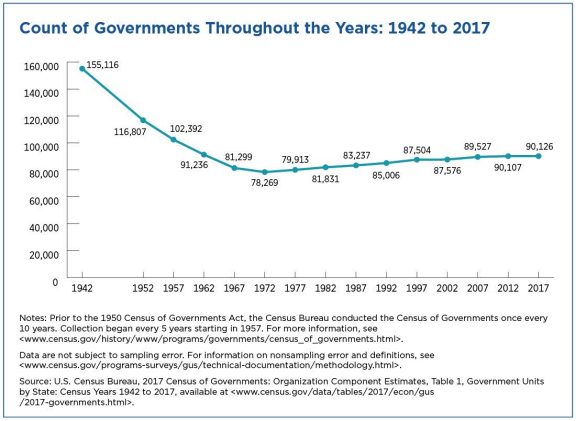
Local governments are classified into five types: county, municipal, township, special districts and school districts.
County, municipal and township governments are general-purpose governments. The official count for those types of governments has not changed significantly since 2012.
Then there are special districts.
They typically have a shorter lifespan and higher turnover than general purpose governments, but the difference in their counts was also relatively slim between 2012 and 2017: The 2017 Census of Governments added more than 1,500 special districts and removed roughly 1,260 that are no longer operating.
Nebraska Examples of Special Districts
Airport Authorities, Cemetery Districts, Community Building Districts, County Fair Boards, Drainage Districts, Hospital Districts and Authorities, Housing Agencies, Interstate County Bridge Commissions, Irrigation Districts, Joint Electric Power, Sewerage and Solid Waste Disposal, Water Distribution Agencies—1981 Law, Joint Public Power Authorities—1982 Law, Metropolitan Transit Authority, Metropolitan Utilities Districts, Natural Resources Districts, Public Power Districts, Reclamation Districts, Risk Management Pools, Road and Street Improvement Districts—1957 and 1961 Laws, Rural and Suburban Fire Protection Districts, Rural Water Districts, and Sanitary and Improvement Districts.
Why So Many New Special Districts?
So why are states creating special districts these days?
In some cases, states create them to provide services to newly- developed geographic areas.
In other cases, the special purpose activity or services already exist, but residents expect a higher level of quality.
For example, a state may have fire protection services. However, the established governmental structure may not legally allow the fire district to raise enough funds to maintain the desired level of quality services.
That’s when a state may choose to create a special district. Most special districts can levy additional property or sales taxes, and may borrow money to buy or build facilities by issuing bonds.
Some districts are only active for a limited time, usually as long as it takes to pay back a debt.
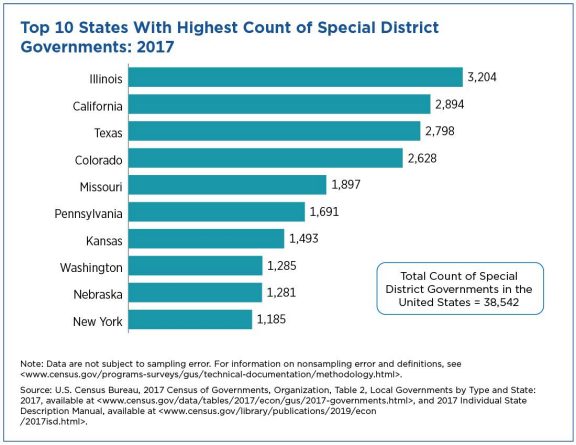
Multifunction Districts
Between the 2012 and 2017 census, multifunction districts grew the most.
Multifunction districts can collect property taxes and issue tax-exempt bonds. Legislation authorizing multifunction districts was passed in most states across the nation in the 1980s.
For example:
- In Colorado, the 2017 Census of Governments added close to 270 metropolitan districts to the master list of local governments in the state.
Metropolitan districts can provide a wide array of services, such as fire protection, street improvements, recreation, mosquito control and television relay services.
These districts can collect property taxes and issue public debt. That’s why it’s important to keep track of public funds controlled by these districts.
Most of the metropolitan districts in Colorado are development districts created to provide funding for development projects.
- In Texas, multifunction districts, called Municipal Utility Districts (MUDs), also showed growth. The 2017 Census of Governments added nearly 200 units to the master list of local governments in Texas.
MUDs provide a variety of utility services in areas not included in a municipality. These districts can finance developing infrastructure and housing.
MUDs can incur public debts in the form of bonds to finance infrastructure and/or housing, and may dissolve in 15 to 25 years after the debt is paid in full.
As in Colorado, developers who see public-private partnerships as business opportunities usually drive the creation of multifunction districts.
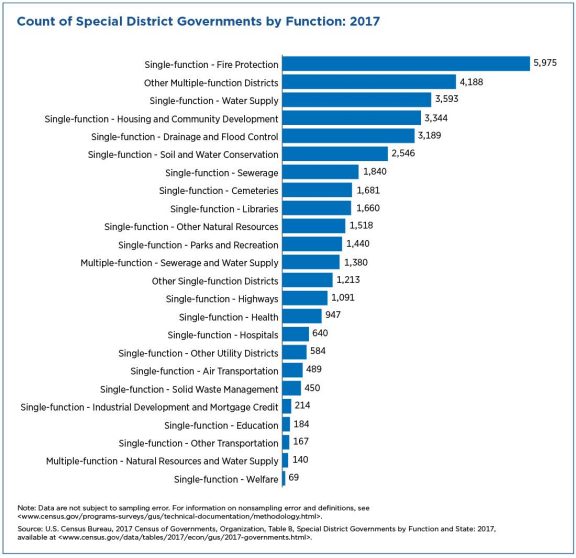
Development And Water Supply Districts
Financing capital improvement was the leading force behind special district growth in Florida.
The 2017 Census of Governments added about 130 new Community Development Districts (CDD). In Florida, CDDs may finance a variety of community development projects, such as new sewage facilities.
The 2017 Individual State Descriptions publication provides a comprehensive description of the governmental organization for the 50 states and the District of Columbia.
Some of these districts are similar to Community Improvement Associations (CIAs) in size and scale of operations. Both are a result of the housing boom from 2003 to 2008.
The major difference is that CDDs are considered public government units that enjoy some tax exemptions, although this comes with other regulations and required transparency in governing these districts.
The 2017 Census of Governments data also reflect the creation of more water supply districts in New Mexico. Over 150 Mutual Domestic Water Consumers Associations were included as special district governments since the last census. Other states, including California, Arkansas, Missouri and Washington, also added between 10 to 20 water supply districts.
Fire And Emergency Services Districts
Nationally, Emergency Services Districts (ESD) that provide local fire protection and ambulance services have grown this decade: 150 were created from 2012 to 2017 — 130 of them in Texas.
The increase is centered in areas experiencing the fastest population growth in the country since the 2010 Census.
Often, ESDs are organized as a funding tool for existing volunteer fire departments. These allow volunteer fire districts to collect additional property and sales taxes to provide service to their expanding communities.
It can be challenging to find fire-fighting funding in areas losing population and experiencing declining property values.
In Arizona, for example, laws passed in 2013 allow fire districts to consolidate into fire authorities to reduce overhead costs. The 2017 Census of Governments shows 14 new joint fire authorities in Ohio.
Some township volunteer fire departments have recently begun to combine personnel, equipment and property tax revenue to become official special district governments.
Another way districts can improve emergency response and rescue operations is by creating Emergency Communications (911) Districts to help coordinate resources between municipalities, counties and other local governments.
Some states, including Texas, Iowa, and Oregon, have had them since 1985. Others like Washington and Massachusetts have recently introduced laws enabling citizens to create 911 districts.
Download the Individual State Descriptions: 2017 Census of Governments
A History of the Census in the United States : Part 3
The 3rd Census: Census Day was August 6, 1810
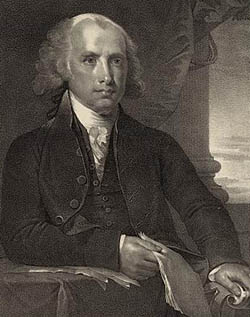
Authorizing Legislation
The authorization act for the third census stipulated that an assistant marshal must actually visit each household, or the head of each family, within his designated enumeration district and should not rely on hearsay or the like to complete his count. The act also mandated that the enumeration commence on the first Monday of August.
Enumeration
An act of May 1, 1810 amended the earlier authorizing legislation to require that, while they were collecting demographic data, assistant marshals also collect available economic data. These men recorded the “several manufacturing establishments and manufactures within their several districts, territories, and divisions.” The marshals transmitted the manufacturing data to the secretary of the treasury at the same time they sent the results of the population enumeration to the secretary of state. No schedule was prescribed for the collection of industrial data and the nature of the inquiries were at the discretion of the secretary of the treasury. Because of this, the collection of manufacturing data was so erratic that it was generally considered useless except to identify broad industrial trends.
Intercensal Activity
An act of May 16, 1812, provided for the publication of a digest of manufactures containing data on the kind, quality, and value of goods manufactured, the number of establishments, and the number of machines of various kinds used in certain classes of manufactures. The report containing incomplete returns for more than 200 kinds of goods and including several items that were principally agricultural, was published in 1813.
Further Information
- A wide variety of historical statistics from this and other decades is available in Historical Statistics of the United States: Colonial Times to 1970. It is available as a PDF [74.4MB] or 2-part ZIP file: Part I [52.2MB] | Part II [66.1MB].
- Reports and statistics from the 1810 census
- History and Growth of the United States Census: 1790-1890 [PDF 117MB], by Carroll D. Wright and William C. Hunt.
Information provided from Census.gov
A History of the Census in the United States : Part 2
The 2nd Census: Census Day was August 4, 1800
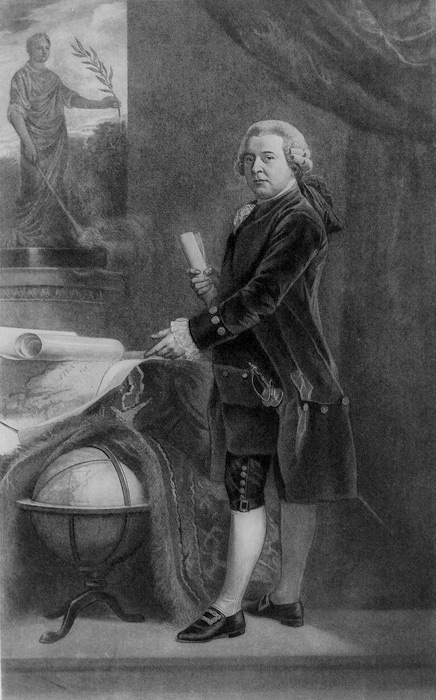
Authorizing Legislation
An act of February 28, 1800 authorized the second census of the United States, which was to include the states and territories northwest of the Ohio River and Mississippi Territory. The census was to conclude within nine calendar months of its start.
The guidelines for the 1800 enumeration followed those of the first census, with only minor alterations in the law. John Marshall, secretary of state in 1800, was the nominal head of census operations. By early 1801, however, Marshall was chief justice of the Supreme Court. James Madison, his successor as secretary of state, oversaw the final tabulations and reported population totals to Congress and the president.
Enumeration
The questionnaire provided space to separately tally free white males and females in several age categories: under 10, 10 but under 15, 16 but under 25, 25 but under 45, and over 45. Indians, slaves, and free blacks were listed in single categories undivided into age groups.
Further Information
- A wide variety of historical statistics from this and other decades is available in Historical Statistics of the United States: Colonial Times to 1970. It is available as a PDF [74.4MB] or 2-part ZIP file: Part I [52.2MB] | Part II [66.1MB].
- History and Growth of the United States Census: 1790-1890 [PDF 117MB], by Carroll D. Wright and William C. Hunt.
Information provided from Census.gov
Jobs Available for the 2020 Census!
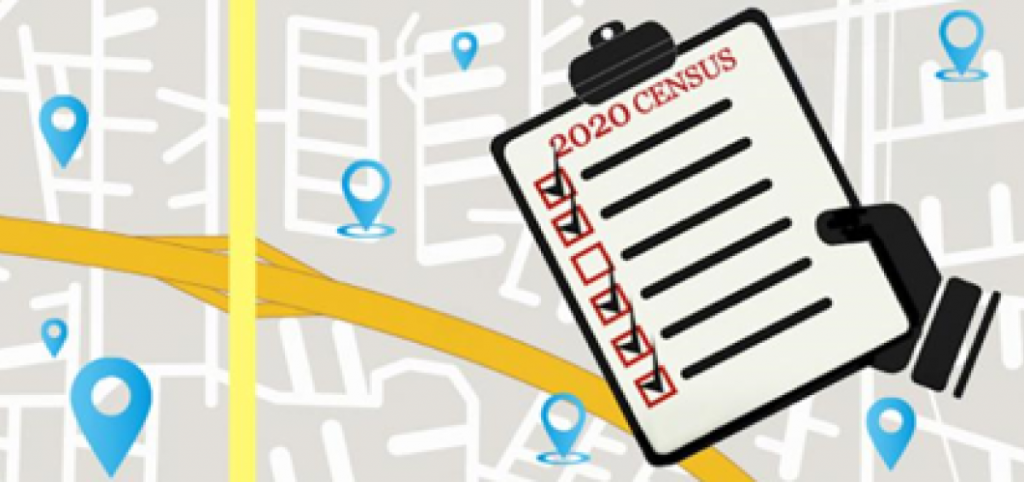
The week of October 21st is Jobs Week for the 2020 Census! Anyone can apply!
The posters below can be printed out and placed anywhere in your library!
Visit 2020 Census Jobs for more information!
Posted in Census, Education & Training, General, Information Resources, Uncategorized, What's Up Doc / Govdocs
Tagged census
Leave a comment
A History of the Census in the United States : Part 1

The First Census: Census Day was August 2, 1790.
Authorizing Legislation
The first census began more than a year after the inauguration of President Washington and shortly before the second session of the first Congress ended. Congress assigned responsibility for the 1790 census to the marshals of the U.S. judicial districts under an act which, with minor modifications and extensions, governed census taking through 1840. The law required that every household be visited, that completed census schedules be posted in “two of the most public places within [each jurisdiction], there to remain for the inspection of all concerned…” and that “the aggregate amount of each description of persons” for every district be transmitted to the president.
Enumeration
The six inquiries in 1790 called for the name of the head of the family and the number of persons in each household of the following descriptions:
- Free White males of 16 years and upward (to assess the country’s industrial and military potential)
- Free White males under 16 years
- Free White females
- All other free persons
- Slaves
Under the general direction of Thomas Jefferson, the Secretary of State, marshals took the census in the original 13 States, plus the districts of Kentucky, Maine, and Vermont, and the Southwest Territory (Tennessee).
Both George Washington and Thomas Jefferson expressed skepticism over the final count, expecting a number that exceeded the 3.9 million inhabitants counted in the census.
Further Information
- A wide variety of historical statistics from this and other decades is available in Historical Statistics of the United States: Colonial Times to 1970. It is available as a PDF [74.4MB] or 2-part ZIP file: Part I [52.2MB] | Part II [66.1MB].
- Publications and population statistics from the 1790 census
- History and Growth of the United States Census: 1790-1890 [PDF 117MB], by Carroll D. Wright and William C. Hunt
Information provided from Census.gov.
The 2020 Census : Confidentiality, in English and Spanish
 When you trust the Census Bureau with your information, their goal — and legal duty — is to keep it safe. Their mission is to serve as the nation’s leading provider of quality data about its people and economy. They couldn’t produce this information without you.
When you trust the Census Bureau with your information, their goal — and legal duty — is to keep it safe. Their mission is to serve as the nation’s leading provider of quality data about its people and economy. They couldn’t produce this information without you.
Their privacy principles guide their actions so that they respect your privacy and
protect your confidentiality.
• They do not identify individuals in the data
• They can only publish statistics.
• Their Disclosure Review Board verifies that any data product
we release meets our confidentiality standards.
From the beginning of the data collection process through the final storage of
information, they protect your data following industry best practices and federal
requirements. They use data encryption and two forms of authentication to secure
system access. The security of their systems is a top priority and they continually refine
their approach to address emerging threats.
The information bulletin below is available in English and Spanish, and can be printed out as a handout or a poster.
2020 Census : Four Ways to Respond
 There are changes to the 2020 Census that will make it easier than ever for everyone to respond. The information bulletin below gives the 4 ways people can answer the Census questions, and can be printed out as a handout or a poster.
There are changes to the 2020 Census that will make it easier than ever for everyone to respond. The information bulletin below gives the 4 ways people can answer the Census questions, and can be printed out as a handout or a poster.
2020 Census : Counting Young Children, What You Need to Know
 The 2020 Census: Counting everyone once, only once, and in the right place.
The 2020 Census: Counting everyone once, only once, and in the right place.
An estimated 5% of kids under the age of 5 weren’t counted in the 2010 Census. That’s about 1 million young children, the highest of any age group. We need your help closing this gap in the 2020 Census. The information bulletin below tells us what research has discovered about why young children are missed and what you can do to help make sure they are counted. The information bulletin can be printed out as a handout, or as a poster:
Census 101 : What You Need to Know, in English and Spanish
 The 2020 Census is closer than you think! Here’s a quick refresher of what it is and why it’s essential everyone is counted.
The 2020 Census is closer than you think! Here’s a quick refresher of what it is and why it’s essential everyone is counted.
¡El censo del 2020 está más cerca de lo que piensas! A continuación te damos un
rápido repaso de lo que es y por qué es esencial que todos seamos contados
The information page below can be printed out as a handout or a poster:
Economic Census : What’s New For 2017 Data
The published data from the 2017 Economic Census will reflect many changes from the data that was published in the 2012 Economic Census. These changes mirror the ever-changing U.S. economy, communities, and data user needs. Below is a summary of these key changes and links to more information.
For a list of the data products for the 2017 Economic Census, see the high-level release schedule at: https://www.census.gov/programs-surveys/economic-census/about/release-schedules.html
Geographic Areas
The 2017 Economic Census will publish data to reflect the ever changing geographic areas as of January 2017. Reference materials that highlight the changes from the 2012 Economic Census will be provided on this site, including maps and documents that highlight the changes to:
- Metro Areas – the Core Based Statistical Areas in 15 states had some type of change
- Counties – Alaska, South Dakota, and Virginia had changes to 1 or more counties
- Economic Places – every state had places with area gain, loss, and/or code or name changes. There are 442 new Economic Places being recognized and 171 places that are being dropped for 2017, primarily due to population decline
NAICS
The 2017 Economic Census will be the first Census program to publish data on the 2017 North American Industry Classification System. 6 of the 18 sectors covered by the Economic Census will see changes to the codes published. These changes include:
- One-to-one recodes – industries with no content change but with a code change
- Many-to-one combinations – 2012 NAICS codes that were combined to form a new 2017 code
- Many-to-many combinations – 2 or more 2017 codes that were created from parts of 2 or more 2012 codes
NAPCS
A key offering from the Economic Census are the detailed Product Lines data, which provides a more detailed breakout of the products made and sold and services provided by businesses. These data from the 2012 Economic Census were provided in separate data tables by sector that provided different information. For the 2017 Economic Census, these data are being consolidated and reformatted following the new North American Product Classification System.
Other Changes
The data products from the 2017 Economic Census will include a number of structural and content changes. These include:
- The new “First Look” report – this new report will feature data not available in the initial “Advance Report” release in prior Economic Censuses.
- Consolidated “Size” reports – These data tables which provide detailed breakouts based on the employment and sales/revenue size of establishments or firms were published in separate and disparate tables by sector. For 2017, these tables are being consolidated and standardized across sectors.
- Added and dropped Miscellaneous Subjects reports – 38 tables from the 2012 Economic Census are being dropped, and 7 new tables are being added. Also, the tables showing data by Class of Customer, Enterprise Support, and Exported Services are similarly being consolidated.
- New disclosure rules – In prior Economic Censuses, the number of establishments was published even when the other statistics for an industry and geography were withheld due to disclosure. For 2017, new privacy rules will result in the establishment count being suppressed when less than 3 or when the other statistics are suppressed.
- Local areas published by sector – Place-level data will no longer be available for the Manufacturing sector and the NAICS and geographic levels published for other sectors may be adjusted based on data quality and privacy issues.
- New data.census.gov platform – the data tables from the 2017 Economic Census will be published on this new dissemination platform. Historical data from the 2012 Economic Census will continue to be available on American FactFinder under they are migrated to the new platform.
Census Bureau Announces 2019 Census Test to Begin
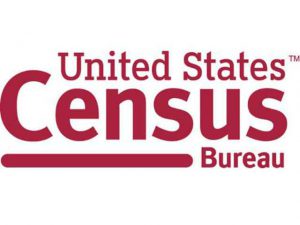 The U.S. Census Bureau has announced that the 2019 Census Test has begun, as approximately 480,000 housing units across the country receive a questionnaire testing the operational effects of including a citizenship question on the 2020 Census. The 2019 Census Test will randomly assign households to two panels and ask them to respond to the 2020 Census questions. Panel A will include the question on citizenship, Panel B will not. Findings from the nationwide test will assist in determining updates to 2020 Census operations, such as how many census takers are needed to follow up with nonresponding households and how to better communicate with households about the 2020 Census.
The U.S. Census Bureau has announced that the 2019 Census Test has begun, as approximately 480,000 housing units across the country receive a questionnaire testing the operational effects of including a citizenship question on the 2020 Census. The 2019 Census Test will randomly assign households to two panels and ask them to respond to the 2020 Census questions. Panel A will include the question on citizenship, Panel B will not. Findings from the nationwide test will assist in determining updates to 2020 Census operations, such as how many census takers are needed to follow up with nonresponding households and how to better communicate with households about the 2020 Census.
Posted in Census, Education & Training, General, Information Resources, Technology, Uncategorized, What's Up Doc / Govdocs
Tagged census
Leave a comment
Libraries’ Guide to the 2020 Census
 The American Library Association has released the Libraries’ Guide to the 2020 Census, a new resource to prepare libraries for the decennial count of every person living in the United States.
The American Library Association has released the Libraries’ Guide to the 2020 Census, a new resource to prepare libraries for the decennial count of every person living in the United States.
The Guide contains practical information to assist library staff in addressing potential patron and community requests regarding the upcoming 2020 Census. The Guide includes:
• basic information about the Census process;
• highlights of new components in the 2020 Census, such as the online response option;
• frequently asked questions;
• a timeline of key Census dates;
• contact information and links to additional resources.
ALA teamed with the Georgetown Center on Poverty and Inequality to develop the Guide, with support from ALA’s 2020 Census Library Outreach and Education Task Force. ALA plans to provide additional resources for library practitioners in the months leading up to Census Day on April 1, 2020.
The Libraries’ Guide to the 2020 Census is available for free download at ala.org/census.
2020 Census: Key Roles for Libraries
 In 2020, the Census will be conducted primarily online for the first time. Like past e-government efforts, this will likely impact libraries and libraries’ technology resources as staff work to assist people in participating in the Census. The 2020 Census also presents an opportunity to increase public awareness and use of Census data. To best position libraries to support our communities in the 2020 Census, ALA is engaging with the Census Bureau and other stakeholders to ensure that libraries are informed and represented in the policy discussions and planning process. ALA is advocating for a fair, accurate, and inclusive Census that recognizes the roles libraries will play in this vital civic effort.
In 2020, the Census will be conducted primarily online for the first time. Like past e-government efforts, this will likely impact libraries and libraries’ technology resources as staff work to assist people in participating in the Census. The 2020 Census also presents an opportunity to increase public awareness and use of Census data. To best position libraries to support our communities in the 2020 Census, ALA is engaging with the Census Bureau and other stakeholders to ensure that libraries are informed and represented in the policy discussions and planning process. ALA is advocating for a fair, accurate, and inclusive Census that recognizes the roles libraries will play in this vital civic effort.
Want to stay up-to-date on our work to prepare for the 2020 Census? Subscribe to ALA’s Census newsletter.
Why the Census is Important
- Representation: The decennial count of all U.S. residents is required by the U.S. Constitution to determine representation in Congress and the Electoral College (known as reapportionment). This data is also the basis for drawing districts for federal, state, and local offices (known as redistricting).
- Funding: The Census is key to the allocation of billions of dollars in federal funding to states and localities (such as grants to states under the Library Services and Technology Act).
- Information: Data resulting from the Census is widely used by researchers, governments, businesses, and other organizations (to, for example, plan for library services).
Key Roles for Libraries
- Partners in E-Government: In 2020, the Census Bureau for the first time will encourage residents to complete the Census questionnaire online, starting in March 2020. Like past e-government efforts, this likely will place additional demands on library staff and technology resources to enable people to complete the Census questionnaire. (Other response methods will also be available.) Libraries can use their experience partnering with government to assist their communities in achieving a fair, accurate, and inclusive count.
- Education and Community Outreach: Libraries have the opportunity to educate their communities about the Census. In the 2010 Census, more than 6,000 library locations hosted Census Bureau outreach activities.
- Public Spaces: Census Bureau field staff often utilize community rooms in libraries as affordable temporary workspaces, such as for staff hiring and training. Other community stakeholders may also use library meeting rooms to host events related to the 2020 Census.
Advocacy for a Fair, Accurate, and Inclusive Census
- Coalition letter regarding to the Commerce, Justice, Science, and Related Agencies Appropriations subcommittees regarding FY2020 funding for the Census Bureau (April 16, 2019
- Testimony to the House Commerce Appropriations Subcommittee regarding funding for the 2020 Census (April 4, 2019)
- The Scoop: “ALA Joins Group Opposing Census Citizenship Question: Supreme Court Argument will be Heard April 23.” (April 2, 2019)
- Amicus curiae brief of ALA, et al., in the Supreme Court of the United States, Department of Commerce v. State of New York, regarding a citizenship question on the 2020 Census (April 1, 2019)
- Coalition letter to the U.S. Census Bureau on recommendations for Questionnaire Assistance Centers for the 2020 Census (March 19, 2019)
- Washington Hotline: “Libraries Can Ensure Everyone Counts in 2020 Census” (February, 2019)
- Letter to the U.S. Census Bureau regarding Questionnaire Assistance Centers for the 2020 Census (February 22, 2019)
- The Scoop: “Census Resources for Libraries: Help Achieve a Complete Count in 2020.” (January 15, 2019)
- Letter to the House and Senate Appropriations Committees urging funding for Questionnaire Assistance Centers in the 2020 Census (December 7, 2018)
- The Scoop: “Libraries and the 2020 Census: Workshops Prepare Librarians for Taking a Complete Count.” (October 30, 2018)
- The Scoop: “Getting Ready for the 2020 Census: Partnering with Complete Count Committees.” (September 11, 2018)
- The Scoop: “ALA Urges Commerce Department to Reject Census Citizenship Question.” (August 9, 2018)
- Comments to the Census Bureau regarding information collection in the 2020 Census (August 6, 2018)
- Coalition comments to the Census Bureau regarding information collection in the 2020 Census (August 1, 2018)
- Coalition Letter to the Senate Commerce, Justice, Science Appropriations Subcommittee regarding FY 2019 funding for the Census Bureau (June 4, 2018)
- District Dispatch: Gearing up for the 2020 Census (April 4, 2018)
- Coalition Letter to the House and Senate Commerce, Justice, Science Appropriations Subcommittees regarding FY 19 funding for the Census Bureau (May 1, 2018)
- Coalition Letters to the House Committee on Oversight and Government Reform and Senate Committee on Homeland Security and Governmental Affairs regarding a citizenship question on the 2020 Census (April 12, 2018)
- Coalition Letter to the Commerce Department opposing the addition of a citizenship question to the 2020 Census (January 10, 2018)
Learn More
- 2020 Census Technology FAQs – frequently asked technical and security questions regarding the 2020 census (CensusCounts.org)
- 2020 Census (U.S. Census Bureau)
- 2020 Census Operational Timeline (U.S. Census Bureau)
- Complete Count Committees (U.S. Census Bureau)
- Census Regional Offices – to contact the Census Bureau staff in your community (U.S. Census Bureau)
- Counting Everyone in the Digital Age: The Implications of Technology Use in the 2020 Decennial Census for the Count of Disadvantaged Groups (Leadership Conference Education Fund and Georgetown Center on Poverty and Inequality, Fall 2017)
- Census 2020 Hard to Count Map (City University of New York Center for Urban Research)
- Public libraries across the United States are planning to play an active role in the 2020 Census (City University of New York Center for Urban Research)
Courtesy of the American Library Association: http://www.ala.org/advocacy/govinfo/census
Countdown to the 2020 Census
 What Is the 2020 Census?
What Is the 2020 Census?
The 2020 Census counts every person living in the United States and five U.S. territories—once, only once, and in the right place. This census is conducted every 10 years by the U.S. Census Bureau, a nonpartisan government agency.
Why We Do It
The results of the census determine your congressional representation as well as federal funding for states and communities. Every year, more than $675 billion goes toward hospitals, fire departments, schools, roads, and more.
It’s also mandated by the Constitution: The United States has counted its population every 10 years since 1790.
When You Can Take the 2020 Census
By April 1, 2020, households will receive an invitation to participate in the 2020 Census. You’ll then have three ways to respond: online, by phone, or by mail.
You can find a detailed timeline for 2020 Census activities here.
And for the first time ever, you’ll be able to respond to the census online! Sign up below for a reminder to complete the 2020 Census.
Everyone Must Complete the 2020 Census
If you live in the United States, you are required by law to participate in the 2020 count, even if you recently completed another survey from the Census Bureau. A complete and accurate count is critical, as the results of the 2020 Census will affect congressional representation, community funding, and more.
Posted in Census, Education & Training, General, Information Resources, Technology, Uncategorized, What's Up Doc / Govdocs
Tagged census
Leave a comment
Free Educational Resources at Census.gov
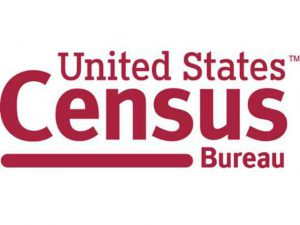 Census.gov Can Help You!
Census.gov Can Help You!
Let Census.gov show you how to find and use Census data for your everyday uses, including informing your business planning, supporting grant proposals and research projects, planning of local schools and hospitals, and much more! Whether you’re looking for economic or demographic data, we can teach you how to get what you need for your various projects.
Options for Learning
There are three main ways that you can learn to find Census data. And all of it is free!
- Webinars – see the list below for our upcoming webinars. No registration is needed.
We also have a network of Data Specialists who can provide training throughout the nation – these webinars require registration. - Video Tutorials – We have a growing number in our Training Resources Library.
- Classroom Training – We do this when distance and staff resources allow. Often, as an alternative to a classroom training, we can schedule a webinar for you on the topic you’re interested in!
Take Advantage of the Data Today!
Upcoming Trainings:
Posted in Census, Education & Training, General, Information Resources, Technology, Uncategorized, What's Up Doc / Govdocs
Tagged census
Leave a comment
Great News for Nebraska Population Estimates!
 The U.S. Census Bureau released its 2016 state population estimates Tuesday, and Nebraska’s population is growing at a higher rate than 32 other states, with the state exceeding 1.9 million residents for the first time.
The U.S. Census Bureau released its 2016 state population estimates Tuesday, and Nebraska’s population is growing at a higher rate than 32 other states, with the state exceeding 1.9 million residents for the first time.
Nebraska’s population grew by 13,351 people from last year’s estimate, a 0.7 percent increase that matched the national rate. Nebraska’s growth rate ranks 17th among states, exceeding neighboring states Iowa, Kansas, Missouri and Wyoming.
Based on current growth and projections, Nebraska could top 2 million in population by 2025.
The growth also makes it very unlikely Nebraska would lose a congressional seat in 2020, said David Drozd, research coordinator at the Center for Public Affairs Research at the University of Nebraska at Omaha.
Drozd said Nebraska could have zero growth the rest of the decade, and, if growth trends in other states stay the same, it would not lose a seat.
“There’s always the possibility the estimates are off, or something major could happen between now and 2020 in our state or nationally, but as of right now Nebraska is in much better position to keep the current three seats than at the beginning of the decade or even last year,” he said in an email.
Nebraska’s population has grown 4.4 percent since 2010. Births exceeded deaths by 67,000 over that period, and the loss of 9,700 Nebraska residents to other states was more than offset by increases of 24,300 people from foreign countries.
“This growth means more people than ever realize Nebraska is the best place in the world to live, work, and raise a family,” Gov. Pete Ricketts said in a statement.
But Drozd cautioned that the closing of the Fort Calhoun nuclear plant, the sale of Cabela’s and ConAgra’s decision to move its corporate headquarters from Omaha to Chicago could all have negative effects on the state’s migration patterns in the next few years.
David Drozd, M.S.
Research Coordinator
Center for Public Affairs Research (CPAR)
Nebraska State Data Center (SDC) Lead Agency
108 CPACS
University of Nebraska at Omaha (UNO) | cpar.unomaha.edu
402.554.2132 (office – direct line)
ddrozd@unomaha.edu
Follow our work by liking our Facebook: facebook.com/unocpar
Posted in Census, Education & Training, General, Information Resources, Technology, What's Up Doc / Govdocs
Tagged census
Leave a comment
The Data Dude on Census Narrative Profiles
 As a number of you work through your accreditation applications, you might also be reviewing your strategic planning documents. Today’s post is about the Narrative Profile from the Census Bureau’s American Community Survey. As you gather information about your community, this simple yet powerful tool might help you with your planning. The Narrative Profile covers 15 different topic areas; users can start their search by zooming in on a map or by using dropdown menus (Step 1). For today’s illustration, a library community was chosen at random, the Lied Imperial Public Library, or the Imperial, Nebraska community.
As a number of you work through your accreditation applications, you might also be reviewing your strategic planning documents. Today’s post is about the Narrative Profile from the Census Bureau’s American Community Survey. As you gather information about your community, this simple yet powerful tool might help you with your planning. The Narrative Profile covers 15 different topic areas; users can start their search by zooming in on a map or by using dropdown menus (Step 1). For today’s illustration, a library community was chosen at random, the Lied Imperial Public Library, or the Imperial, Nebraska community.
Here is how you get your Narrative Profile: After choosing “Dropdown Menus” from Step 1, you then select a geography level from step 2. In this case, Imperial is a “Place”, so we select Place and then Nebraska > Imperial city, Nebraska from Step 3. There are other options besides place, including geography levels such as county, Census Tract, Zip Code, or Metropolitan/Micropolitan Statistical Area (Metropolitan=core urban area of 50,000 or more population; Micrpolitan=core urban area of 10,000 or more population, but less than 50,000). After the place of Imperial is selected, there is a link at the bottom that says “Get Profile”. Clicking on this spits out a report that you could either print, save, or copy and paste parts of it, including the many charts and graphs that it contains. The data covers 2009-2013.
The report contains data from various topical areas. For starters, if we look at household data there are 900 households in Imperial, of which 52% are married couple families. There are 30.8% persons that live alone and 17.2% are other families or nonfamily households. 14% of the population in Imperial spoke a language different than English at home, and 94.2% of that 14% spoke Spanish. The education data is expressed in a pie chart that was generated in the Narrative Profile, located at the top of this post (click on the chart to expand and actuall read it).
There are many additional categories, including data tables and illustrations such as the one above. Some of these are employment status and type of employer, industries (retail trade is the highest at 26.7%), occupations, commuting to work (81.1% drive alone and 9.8% walked), income (women, unfortunately make about $14,000 less than men in Imperial), poverty rate (12% overall), health insurance (16% do not have insurance), population age distribution, and housing characteristics.
While the Narrative Profile certainly isn’t as comprehensive as the reports you can build from the Advanced Search section on American FactFinder, for a quick snapshot of your community it’s a good starting point. And it has the extra benefit of producing some nice basic charts and graphs that you are free to copy and paste. The Dude likes not only reliability, but simplicity. Shaka.
Posted in Census, General, Information Resources, Library Management, Uncategorized
Tagged census
Leave a comment
Census Changes Highlighted in Demo
The U.S. Census Bureau will hold a demonstration of new data access tools live online via the Census Bureau Ustream channel on Thursday, January 31 at 1:00 p.m. (CST). The demo will include new and enhanced features in American FactFinder, such as Community Facts and Guided Search as well as provide a look at other new data access tools, including Easy Stats, developed from the Census Bureau’s Application Programming Interface, and the America’s Economy mobile app. Viewers will be able to ask questions, either by phone or asking via the Census Bureau’s Facebook and Twitter accounts.
Posted in Census, General, Information Resources, What's Up Doc / Govdocs
Tagged census
Leave a comment
Census Bureau Releases New Web Tool
The U.S. Census Bureau launched a new web application today called, “Easy Stats,” a tool designed to make statistics easier to access. It provides selected demographic and economic statistics from the American Community Survey (ACS) and allows searching by geography down to the local level. You can road test the new app at http://www.census.gov/easystats/. The Census Bureau has also updated the popular QuickFacts site with the new ACS statistics, making it easier to find data about a city, county, or state.
Posted in Census, General, Information Resources, Technology, What's Up Doc / Govdocs
Tagged census
Leave a comment
You Can Now Search the 1940 Nebraska Census Records!
I have great news for everyone who has been impatiently waiting since April 2 to search the 1940 Nebraska Census records. You can now search them at: https://familysearch.org/1940census/1940-census-nebraska
If you haven’t been following the 1940 census information the census documents were made available on April 2nd however they had not been indexed. That meant the only way to locate a person in the census was to look at the pages and pages of handwritten records. Now that the indexing has been completed for Nebraska you can simply search for a person. It’s so much simpler.
I’ve been trying to locate one of my grandparents since April 2nd! My relatives where positive I’d find them living in a specific area of Omaha. Unfortunately for me that general area covered multiple enumeration districts. I looked through hundreds of census pages without any luck. After a quick search this morning I found my grandparents living in Grand Island. I will be having a little talk with my relatives tonight regarding their inaccurate information!
As I was using the search form I stumbled across a search feature I wanted to share with everyone. I have a relative with a Czech last name I can never remember how to spell so I tried using a wildcard. It worked after a couple of trials and errors. I consulted help and learned the system supports 2 types of wildcards.
- ? – Use the question mark to represent any one character
- * – Use the asterisk sign to represent zero or more characters
The important thing to note however is that in order to use a wildcard your word must have at least three other letters! It took me a few tries to get it right because I was only using 2 letters.
Learn more about the 1940 census on our website at: http://nebraskaccess.ne.gov/1940census.
To keep informed on which states are searchable go to: https://familysearch.org/1940census/?cid=fsHomeT1940Text_v2. There are currently 29 other states that are searchable.
Good luck searching!
Posted in Census, General, Information Resources, Technology, What's Up Doc / Govdocs
Tagged census
1 Comment


